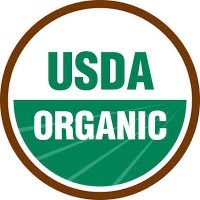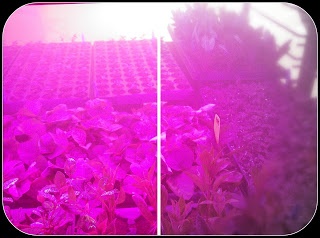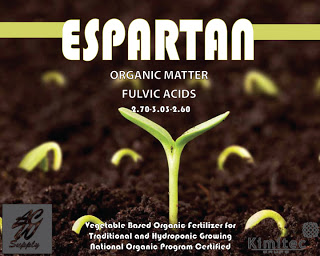Organic hydroponic cucumber production:
Organic hydroponic tomato production:
Visit our corporate website at https://hortamericas.com
Organic hydroponic cucumber production:
Organic hydroponic tomato production:
Visit our corporate website at https://hortamericas.com
David Kuack is a freelance technical writer in Fort
Worth, Texas; dkuack@gmail.com.Visit our corporate website at https://hortamericas.com
Visit our corporate website at https://hortamericas.com

Visit our corporate website at https://hortamericas.com
Hort Americas is please to offer the first in a series of innovative educational videos geared toward commercial greenhouse growers and hydroponic vegetable growers in controlled environment agriculture facilities.
The first will be product videos that provide you (the viewer) the necessary facts and information you need to incorporate these tools at your growing facility.
The second will be educational only videos. These videos will focus on horticultural and hydroponic topics. Topics will range from managing the root zone to managing light. Please email us at infohortamericas@gmail.com if there are any specific topics you would like to see tackled.
Visit our corporate website at https://hortamericas.com
Visit our corporate website at https://hortamericas.com
Visit our corporate website at https://hortamericas.com
Hort Americas has been extremely busy leading up to the Thanksgiving Holiday Weekend. And lets just say its the good busy, the fun busy!
Last night we shot our first video which will ultimately become a series of educational and information videos geared towards the commercial horticulture and hydroponic industry. The first video will focus in on the Philips GreenPower LED Production Module and its possible application in the production of ornamental and hydroponic crops.
 |
|
| The New Videos will focus on LED Grow Lights and will star Ms. Abigail Herring! |
Hort Americas is also and excited and proud to be working with many of the industry’s top editors. We are dedicated and focused on helping to build the industry, which makes us thankful (since it is Thanksgiving) for the work of individuals like Annie White of Ball Publishing. See a sample of Annie’s work here.
Happy Thanksgiving everyone!
Visit our corporate website at https://hortamericas.com
Hort Americas just returned from an excellent visit to The Netherlands and the 2011 HortiFair.
If you get a chance, make sure to visit our Facebook Page and check out our the Photos provided by Dr. Johann Buck and Mr Gerson van’t Wout. (See alot of interesting photos on the Horticultural LED Grow Lights.)
Also, for those interested in Philips GreenPower LED Grow Lights…click here to see their new Newsletter.
Visit our corporate website at https://hortamericas.com

 |
| Crops on Cannon carts under fog and Philips LED Grow Lights |
 |
| Finished crop on Cannon carts (multilayer production) under LED grow lights |
Tim Blank and our friends at Future Growing, LLC have done it again! Check out this amazing project they did with the city of Chicago and the Ohare Airport.
Completed in September, we wanted to wait till we had a chance to visit it. So check out the video and then the photos from our visit.
 |
| Urban Agriculture and Hydroponics |
 |
| From Leafy Greens to Herbs to Veggies and Edible Flowers |
 |
| Farming of the Future |
Please email us with any additional questions on this project or other hydroponic projects around the world.
Visit our corporate website at https://hortamericas.com

Its finally up and live! Kimitec.com is the perfect place to go to learn about the latest trials on this organic and non-organic line of fertilizers. From Amifort to Tundamix, the Kimitec Group (along with the support of American Clay Works in North America) continue to focus increased yield, plant health and vigor. Please follow this link to learn more about Kimitec Trials in hydroponics, commercial greenhouses and general agriculture.
Visit Hort Americas for additional technical information and to buy your Kimitec today.
Visit our corporate website at https://hortamericas.com
Hort Americas is proud to announce our relationship with PRIVA North America (http://www.priva.ca/en).
“Priva creates innovative solutions for
climate control and process management that make minimal use of
scarce natural resources, such as energy and
water.” For commercial hydroponic vegetable growers, vertical farmers, urban agriculturalist and greenhouse growers this includes (but does not limit) tools and management strategies for greenhouse/warehouse climate, fertilization, water (incl irrigation), labor, harvest as well other process and processing issues.
Check out this video to learn more about the history of Priva and how they may help your controlled environment agriculture production facility, vertical farm or hydroponic greenhouse.
Visit our corporate website at https://hortamericas.com
Horticoop B.V. has released the fourth issue of the magazine BLAD or e-Leaf in English. Check it out!
Visit our corporate website at https://hortamericas.com
Hort Americas recently finished its last round of training on Philips GreenPower Horticultural (Hydroponic) LED Product Portfolio.
This training not only included intense product training, but it also included training on LED applications for:
1.) Hydroponic Production of Greenhouse Vegetable Crops like Tomatoes, Peppers and Cucumbers
2.) Hydroponic Production of Greenhouse Leafy Green and Herb Crops
3.) Greenhouse Ornamentals
4.) Seed Production
5.) Tissue Culture
6.) Growth Chambers and Grow Rooms
7.) Needs of Research Facilities and Universities
8.) Multi-layer Production
9.) Vertical Farming
10.) Urban Agriculture in Controlled Environments
Next step will be UL certification for the complete line of Philips GreenPower LEDs which are currently being trialed and commercially used in a wide variety of growing facilities around the world.
PlantLab along with many other forward thinkers is working with LEDs.
Visit our corporate website at https://hortamericas.com
Not alot of time for a post today, but wanted to put a teaser out there that we are looking at an organic fertilizer that should fit well with Hydroponically Grown Greenhouse Greens, Herbs and Veggies.
Email infohortamericas@gmail.com for details or check out our facebook page for images http://www.facebook.com/pages/Hort-Americas/133476796695370#!/pages/Hort-Americas/133476796695370
Hope everyone is having a good summer!
Visit our corporate website at https://hortamericas.com
Translation:
LED lighting promising for better light distribution and light as a control
Most opportunities for LED lighting are in the preliminary application as a control light for better light distribution. This emerged from a meeting of the business platform light on July 7 at the Horticulture. The purpose of the meeting was the latest results from research, both in the floriculture and vegetable cultivation, to share and discuss.
The presentations and discussions with the 40 present researchers, consultants, suppliers and growers, showed that the replacement of SON-T by LED lighting is expected to have a few years away. This by the high costs and too little energy. And while the heat of a SON-T lamp added value, there is no need to replace it with LEDs. On the cost and energy efficiency of the lamp is however working hard by the suppliers.
But there are opportunities to control light and better light distribution over the crop with LEDs. Examples that were discussed were as LED control light in carnation to replace the bulb and LED in a more low-growing tulip. This requires a lot of interest from practice. The price of LED bulbs is still a bottleneck.
Led by as additional exposure with SON-T used between the crops, like tomatoes, is also an added value given. This additional production by the improved light utilization of the crop. The discussion showed that new research is to focus on the above opportunities, but one must closely reflect the practical results that also picked up more easily.
The meeting is with LTO Grow Service, Ministry EL & I Product Board for Horticulture and organized within the framework of the Platform of Light program Greenhouse as Energy Source and is a continuation of previous meetings. This is the innovation and action to significantly reduce CO2 emissions and greatly reduced dependence on fossil energy for the greenhouse in 2020.
Visit our corporate website at https://hortamericas.com
Urban farming using multilayer production continues to expand in Europe. What does this mean for urban farmers in the U.S.?
Visit our corporate website at https://hortamericas.com
Visit our corporate website at https://hortamericas.com